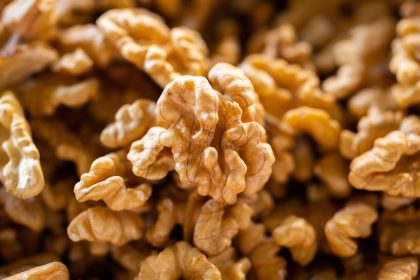Benefits of Low Impact and Low Intensity Exercise

WASHINGTON — You likely know that exercise is a healthy habit that can boost overall health and physical fitness. There are many types of exercise, such as resistance training, aerobic or cardio, flexibility and balance.
Within each category, the options multiply, and we’re going to zero in on the concepts of high and low impact, defined as how much force exercise causes on your joints and bones, and intensity, or how hard you work. What’s best for one person may not work for another; let’s break it down.
Impact and Intensity: High vs. Low
To understand impact, consider how often your feet leave the ground and how hard they come back down. A classic example is running. Each time your feet hit the ground, your bones and joints take on the force of 2.5 to 3 times your body weight.
High Impact Exercise Examples
- Strength Exercise: plyometrics (jumping exercises), jumping jacks, jump rope, burpees, jump squats, jumping lunges.
- Aerobic Exercise: running, sprinting, training for sports that involve running and jumping.
Low Impact Exercise Examples:
- Strength Exercise: weightlifting, yoga, pilates, exercises performed lying down.
- Aerobic Exercise: walking (some impact but lower than running), elliptical, cycling, swimming.
While high impact exercises are beneficial for building strength and endurance, especially for athletes, they may cause injury or discomfort to some people. In low impact exercises, your feet stay planted on the ground, or you may lift one at a time and lower them back down slowly.
Low impact exercise doesn’t necessarily mean you won’t be working hard — here’s where intensity comes into play. Exercise intensity refers to how hard you work during exercise; your heart rate or the talk test can measure it. If you can talk while exercising, it’s lower intensity; if you can’t speak or carry on a conversation, it’s higher intensity.
High impact exercises are generally more intense because of their speed and force. However, you can manipulate low impact exercises to become more intense. The American Heart Association uses the terms moderate-intensity and vigorous-intensity. They recommend 150 minutes per week of moderate intensity exercise, 75 minutes of vigorous intensity exercise, or a combination of both every week.
Here are some ways to increase intensity while keeping impact low.
Increasing Intensity in Strength Exercise:
- Lift Heavier Weights: The most straightforward way to increase intensity in resistance training is by lifting heavier weights. Your feet don’t leave the ground, but you could lift hundreds of pounds off the floor for a couple of repetitions and your heart rate will skyrocket.
- Circuit Training: You can raise the intensity with lighter weights. You can perform a few low impact exercises in a row with just your body weight, or lighter, rest for a short time, and repeat. Continuously moving and engaging your muscles keeps your heart rate up.
- More Time Under Tension: You can keep everything slow and light but still raise the intensity. Doing five slow squats with maximum muscular tension can be a high-intensity exercise, though it may look easy.
Increasing Intensity in Aerobic Exercise:
- Increasing Speed: To increase the intensity, do low impact exercises faster. A brisk walk, swimming laps quickly, or a fast bike ride will raise your heart rate.
- Adding Resistance: Keep the speed moderate, but add some resistance. Walking or cycling slowly on a flat surface will be low intensity exercise. Walking uphill, on a hike or on an incline on a treadmill, at the same pace makes it moderate or high intensity.
- Interval Training: Interval training refers to alternating periods of higher intensity with short periods of lower intensity or rest. An example would be incline walking on a treadmill at a higher incline for one minute, lowering the incline to walk for one minute and repeating. Increasing your heart rate and letting it come down with a low-impact activity like walking, cycling, swimming, or bodyweight exercise is a great way to raise the intensity without adding stress.
Who Should Try Low Impact or Low Intensity Exercise
Here are a few reasons why low impact, varied intensity exercise could benefit you.
- Beginners: People new to exercise can strengthen their muscles and build their endurance with low impact exercises and gradually increase intensity.
- Injury Rehabilitation: If you’re recovering from an injury, it’s often safer to do low impact exercises to rebuild strength without adding stress to your joints, tissues and bones.
- Bone Health: People at risk of osteoporosis are often advised to do weight-bearing exercises, like walking and resistance training, to keep their bones strong. This is another case where adding intensity can help, but maintaining low impact is beneficial.
- Active Recovery: Athletes who regularly do high impact and high intensity exercise can still benefit from low impact, lower intensity work on a rest day from their regular training.
- “LISS” for General Health: There is a style of cardio exercise called low intensity steady state. A LISS workout can be 45 to 60 minutes at low intensity and usually low impact. The idea is that you exert less energy for longer, like a leisurely walk or easy bike ride. Research shows LISS can benefit heart, mental, and bone health while increasing endurance and burning calories. Many people do not get enough movement, and a low intensity and approachable option like LISS may make them more likely to exercise.
Slow and Steady
A great workout doesn’t always mean heavy sweating, running. jumping and gasping for air. You can still raise your heart rate to increase the intensity of an exercise while keeping your feet on the ground. Always focus on engaging your muscles in anything you do. If you want to do something lower intensity, like a leisurely walk, do it for 45 to 60 minutes for similar heart health benefits as a fast run for a shorter time.
Our website content, services and products are for informational purposes only. The Well News does not provide medical advice, diagnosis or treatment. If you have medical concerns or questions, discuss with your health care professional.
You can reach us at [email protected] and follow us on Facebook and X (formerly known as Twitter)
























